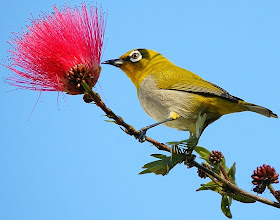Garrulax sukatschewi
 |
| Photo by Chong Cha (Flickr) |
Common name:
snowy-cheeked laughingthrush (en); zaragateiro-de-Sukatschev (pt); garrulaxe de Sukatschev (fr); charlatán de Sukatschev (es); Kansuhäherling (de)
Taxonomy:
Order Passeriformes
Family Timaliidae
Range:
This species is endemic to China, only being found in the south-western parts of the country, in
the Min Shan mountains in southern Gansu province and adjacent parts of north-central Sichuan province.
Size:
These birds are 27-31 cm long.
Habitat:
The snowy-cheeked laughingthrush is found in temperate forests, including mixed, evergreen and broadleaved, usually where there is undergrowth of bamboo and scrubs. Also in grasslands and near rivers and streams, at altitudes of 2.000-3.500 m.
Diet:
They forage on the ground, among the moss and leaf-litter, taking invertebrates, seeds and berries.
Breeding:
These birds breed in May-July. The nest is a bowl, placed 2-3 m above the ground on a tree, most often a spruce. The female lays 2-5 eggs which are incubated by both parents for 14 days. The chicks are raised by both parents and fledge 16-18 days after hatching.
Conservation:
IUCN status - VU (Vulnerable)
The snowy-cheeked laughingthrush has a small and severely fragmented breeding range. The population is estimated at 2.500-10.000 individuals, and moderate and on-going declines are suspected, owing to the rate of degradation of habitats across the species's range. Forest cover has declined rapidly in Sichuan since the late 1960s, through exploitation for timber and clearance for cultivation and pasture, resulting in habitat loss and fragmentation for this species.

















